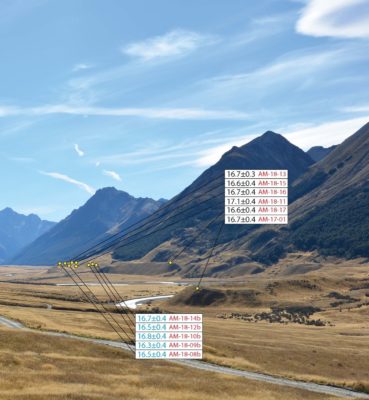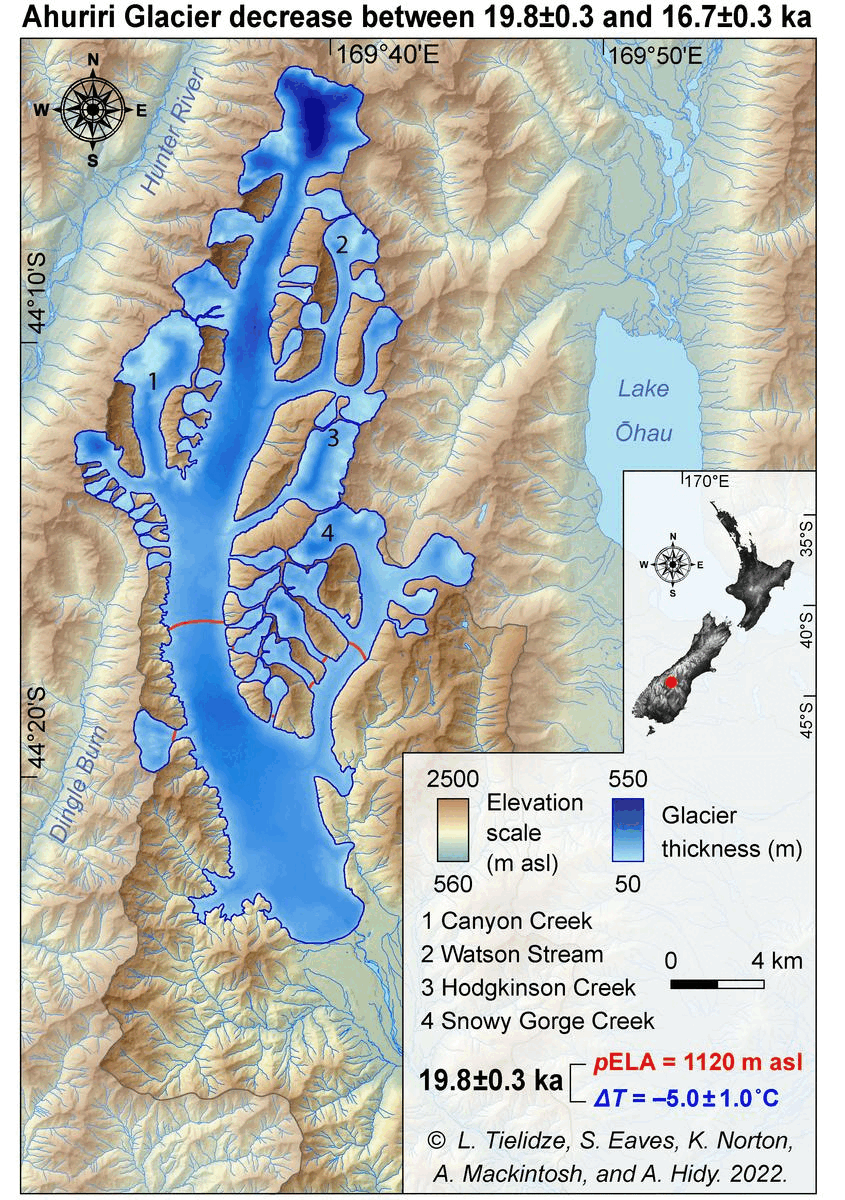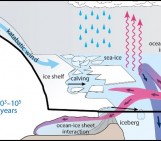
In this week’s blog, Levan Tielidze tells us about the new glacier history from the Southern Alps of New Zealand, an important piece of information to better understand the climatic history of Earth during the Quaternary, the current geologic period.
Quaternary glaciations
Geochronological dating of glacial moraines is useful for determining the extent and timing of past glaciation and for reconstructing the magnitude and rate of past climate changes. This is essential to reveal the climatic history of Earth. Late Quaternary glacier-based climate reconstructions from the Southern Alps of New Zealand are of particular interest since very few glacierized mountain regions exist in the mid-latitudes of the Southern Hemisphere.
The Last Glacial Period encompasses the period from 115 to 11.7 thousand years ago and is known in Europe as the Würm glaciation (Alpine) and in North America as the Wisconsin glaciation. This time period is also often referred as the Late Pleistocene, being the Quaternary divided in two epochs: the Pleistocene (from to 2.6 million years before present, BP, to 11,700 yr BP) and the Holocene (the current epoch, which started 11,700 years BP).
During the Last Glacial Period New Zealand experienced multiple glaciations, as many other mountain chains of the Earth. Most of our knowledge concerns a specific part of the period, which is known as the Last Glacial Maximum (LGM), occurred between 35 and 18 thousand years ago. During the LGM a large and complex system of paleo-glaciers extended approximately 700 km along the Southern Alps on New Zealand and averaged ~100 km in width (Barrell, 2011). Although recent significant progresses in reconstructing the Last Glacial Maximum and the subsequent deglaciation in New Zealand, the quantitative estimation of retreated ice and temperature decrease during this time is still subject of debate.
The new study
In a recently published study based on the application of the cosmogenic nuclide dating we investigate the maximum extent and deglaciation of a paleo-glacier during the Last Glacial Maximum in the Ahuriri River vally, central Southern Alps, New Zealand (Figure 2).

Figure 2. Middle Ahuriri River valley on the background of dated glacial boulder (Credit: L. Tielidze).
The study shows that former Ahuriri Glacier reached its maximum extent 19.8 thousand years ago. This advance appeared to be the largest event during the last glacial cycle in the Ahuriri River valley. Based on geomorphological mapping, a digital elevation model, high-resolution aerial imagery, and oblique aerial photographs, we reconstructed the geometry of the past glacier occupying the Ahuriri River valley. The former glacier covered at least 220 km2 19.8 thousand years ago. The length of the main trunk of the ice was ~41 km. Glacier snowline was lower than present by ~880 m during that time and the temperature was ~5°C colder than present. By 16.7 thousand years ago the Ahuriri Glacier had retreated 18 km from its maximum position. This deglaciation was accompanied by the formation of a shallow proglacial lake. Glacier snowline was lower than present by ~770 m during that time and the temperature was ~4.4°C colder than present (Figure 3).

Figure 3. Changes of former Ahuriri Glacier and associated snowline/temperatures between19.8 and 16.7 thousand years ago (Credit: Tielidze et al., 2022).
What can we learn from the past?
Our study shows that in response to a warming of 0.6°C, a glacier retreated 21 km. This is probably related to the high sensitivity of such a glacier system, characterized by a long ice tongue with a low topographic gradient. Now consider that the IPCC currently reports a global warming of 1.5 °C above pre-industrial levels and make your considerations. If a temperature difference of 0.6°C caused the glacier to retreat ~21 km, what is going to happen in the near future because of the anthropogenic climate change?
Further reading
- Barrell (2011). Quaternary Glaciers of New Zealand. Chapter in “Developments in Quaternary Sciences” 15:1047-1064.
- Tielidze et al. (2022). Cosmogenic 10Be constraints on deglacial snowline rise in the Southern Alps, New Zealand. Quaternary Science Reviews 286:107548.
Edited by Giovanni Baccolo
 Levan Tielidze is a PhD student at the Antarctic Research Centre and School of Geography, Environmental and Earth Sciences, Victoria University of Wellington. His field of research is modern glaciers and glacial-geomorphological studies of the mountainous areas in the Late Quaternary. Contact email: tielidzelevan@gmail.com. He tweets as @LevanTielidze.
Levan Tielidze is a PhD student at the Antarctic Research Centre and School of Geography, Environmental and Earth Sciences, Victoria University of Wellington. His field of research is modern glaciers and glacial-geomorphological studies of the mountainous areas in the Late Quaternary. Contact email: tielidzelevan@gmail.com. He tweets as @LevanTielidze.




